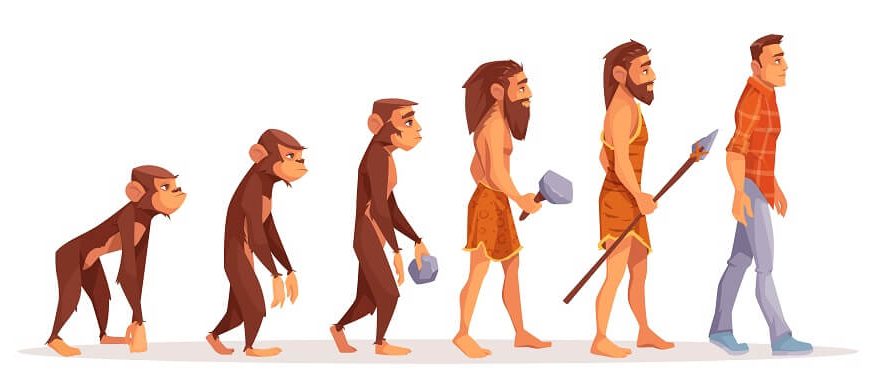‘Once upon a Time.’
Four words that we all know only too well. The beginning of most fables and fairy tales, they hold the promise of only good things to come.
And just like that, Once upon a time, a long, long time ago, there was a massive explosion. Before this explosion, you could almost say, there was ‘Nothing.’ Blackness, if you prefer – a combination of Gas and Dust.
That explosion that occurred around 20 billion years ago, is now known to be the underlying reason behind the Origin of Life on Earth. Widely known as the Big Bang Theory, it is the most widely accepted reason behind the existence of the myriad creations of Nature. Ourselves included, of course.
To know how life started on earth, is to understand the Evolution of Life on Earth, from the grassroots level. Do you want to find out how life as we know it today, really began?
Read on, to unlock the answer to the question, ‘How did Life begin on earth?’
The Origin of Life: The Big Bang Theory
Before we understand how life on our planet began, we must first understand how our planet even came into existence!
Out of all the explanations pertaining to how our Universe came into existence, the Big Bang Theory is the most popular.
According to the Big Bang Theory, in the beginning there was only a single ‘Point’, that was infinitely hot and dense.
All of a sudden, there was an explosive expansion that ballooned this point outwards, faster than the speed of light. Over the next 13.7 billion years, this expansion took place at a more measurable speed, and led to the Cosmos that we all know today.
When this explosion came to a mysterious end, our cosmos was populated with particles and ‘Stuff’, that would become Stars and Galaxies.
Now you know why they say, ‘We are made of Stardust!’
How Life Started on Earth: In the Beginning
When answering the question, ‘How did Life begin on Earth’, it is only natural that we ask ourselves, what was there Before all life on Earth?
For almost a billion years, the possibility of life on earth was bleak. The environment on our planet then was extremely hostile, with blisteringly hot temperatures that soared above 200 degrees C. It was only around 3.8 billion years ago that the temperatures on our planet dropped below the boiling point of water. This was the time when the Earth got its very first taste of Rainfall!
There is a theory that is doing the rounds on the origin of life on Earth, known as Abiogenesis. It loosely states that Life stemmed from inanimate materials through natural processes.
Another theory that proposes to explain the origin of Life, is the Panspermia Hypothesis. What this states is, life on Earth came from the likes of galactic bodies like meteors and comets. Of course, just like the earlier theory of Abiogenesis, the underlying basis of this theory is mere speculation.
Evolution: What it is
As we have seen, when it comes to pinpointing the origin of life on earth, we must skip the ‘How’ and ‘Why’ parts, for lack of evidence. The truth is, nobody really knows the answer. What is more pertinent, is understanding the Evolution of life on Earth. To do that, we must first have a brief idea of what Evolution is.
In a nutshell, the theory of Evolution states that all the types of living beings that we see today, developed from earlier types.
Traces of the very simplest forms of life date back to around 3.5 billion years ago. It took billions of years of ‘Evolution’, for these simple life forms to evolve into the many million species of living things we see today.
Evolution is far from being a frivolous claim by Scientists. In fact, it is even something that can be accurately tested! This, backed by plenty of sound research by scientists, who have collated large amounts of evidence to back their claims.
The Evolution of Life on Earth
Life as we know it today, took several years to evolve, and included several life forms.
Microbes
The very first evidence of life on earth, lies in the form of Microbes, that date back to 3.5 million years.
The reason we know about these mysterious organisms is because of the signals of their presence that they left in rocks, that date back to this period.
Cyanobacteria
It was actually the evolution of Cyanobacteria that occurred roughly 2.4 billion years ago that led to the first ‘real’ transformation, of simpler life forms to higher ones.
We are all so accustomed to the Oxygen we breathe, it’s hard to imagine any form of life existing without it. These bacteria were the very first ‘Photosynthesizers’, using Water and the energy of the Sun to produce food. Of course, the by-product of this process was the release of Oxygen into the air!
Multicellular Organisms
Cyanobacteria evolution was not the only remarkable event that occurred back then. Up till this point, life on Earth consisted of only microbes, that were single-celled organisms. Now, for the very first time, cells began living together, and DNA became packaged in nuclei.
It was a staggering 800 million years ago that these groups of cells that ‘lived’ with one another, went on to become the first animals. Among the earliest recorded animals were Sponges.
The Cambrian Period
It was around 500 million years ago that there was actually a vast explosion of life forms that are closest to the ones we know today. This was the first time one could see the emergence of Heads and Tails, and even hard body parts like Shells and Spines!
At EuroKids we know well that young children are a most curious breed. Forever wanting to learn about all things that live, they will be delighted to know about their origins, too. After all, learning about the History of Life, takes one back to their earliest roots.















